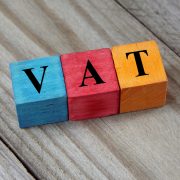Knowledge Development Box Update

The Knowledge Development Box was introduced by Finance Act 2015, for those companies whose accounting periods commence on or after 1 January 2016. This legislation will allow small and medium sized companies engaged in research and development activities which led to the creation of the patent, copyrighted software or intellectual property (IP) equivalent to a patentable invention to reduce the tax paid on profits arising from these qualifying assets.
Updates to the legislation were enacted in September 2023 and from October 2023 the profits arising from patents, copyrighted software or IP equivalent to a patentable invention are now taxed at an effective rate of 10% rather than a previous effective rate of 6.25%.
Although this is not as favourable as it once was, if the profits arising from qualifying assets are significant, there could still be significant tax savings for companies.
Qualifying Assets
For the purposes of KBD, a qualifying asset would include the following assets that arose from R&D activities:
- A computer programme
- An invention protected by a patent
- IP for small companies
Qualifying Income
Any income generated from the above qualifying assets will qualify for the relief. The income generally would include:
- Royalty income
- Licensing fees
- Portion of sales price that is attributable to qualifying assets
Operation of Relief
The relief operates by allowing a tax deduction of 20% (from October 2023) of the qualifying profits from the R&D activities which results in an effective tax rate of these profits of 10%. In order to calculate the qualifying profits figure, there is a formula to use as follows:
QE + UE x QA
OE
QE – Qualifying expenditure
UE – Uplift expenditure
OE – Overall expenditure
PQA – Profits from qualifying assets
Qualifying expenditure includes costs that have been borne by the company, wholly and exclusively in carrying out R&D activities which result in the creation, improvement or development of the qualifying assets.
Overall expenditure is the overall expenditure the company has incurred on R&D on the qualifying assets. The main difference between qualifying expenditure and overall expenditure is that outsourced costs and acquisition costs incurred by the company in relation to qualifying assets can be included here.
An additional “uplift expenditure” is allowed to increase the qualifying expenditure on the qualifying asset. The uplift expenditure is the lower of:
- 30% of the qualifying expenditure; or
- the aggregate of the acquisition costs and group outsourcing costs.
As can be seen from the above, the formula seeks to restrict purchases costs of IP and group outsourcing – this makes it more beneficial to Irish companies who do all the majority of the development work in house rather than multinationals who outsource elements to group companies.
Claims for the KBD must be made within 24 months of the period end.
For further information on the above article or any other issue surrounding the Knowledge Development Box, please contact us.








